Effective Strategies for Living, Part IItm
INTRODUCTION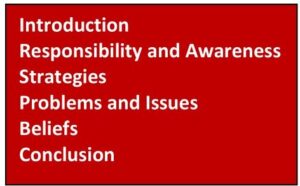
In previous Letters we defined pain and suffering and looked at ways to avoid them with effective strategies for living. In this Letter we will explore some fundamental aspects of effective strategies for living: responsibility and awareness, the nature of strategies, problems and issues, and beliefs. This will provide us with the deeper understanding that prepares us for using effective strategies for living in order to respond to the pain and suffering that enters our life. This discussion is meant to be an introduction and a beginning exploration of these aspects of effective strategies.
Point of Empowerment: The most important blockage or resistance to using effective strategies for living is the refusal to take responsibility, refusing to own our thoughts, feelings, actions, and the consequences of our actions. Seeing the consequences of our actions is necessary for us to understand cause and effect. Without that understanding we will never see that our behavior is the cause of effects, effects like being able to respond to or avoid pain and suffering.
RESPONSIBILITY and AWARENESS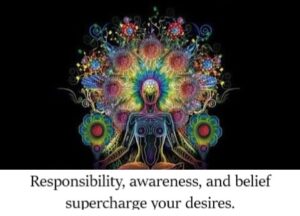
Responsibility. Taking responsibility means recognizing and owning what belongs to you. Our thinking, feeling, and the actions we take belong to us; we own them. While we don’t have immediate control over our thoughts and have no control over our feelings, we have control over how we express these aspects of ourself, our actions. The consequences of our actions are the results of our actions but since we do not have control over the consequences we are only partially responsible for them. However, the consequences of our actions are of the utmost importance since they tell us if a strategy is succeeding or failing.
When we say that this thought or action belongs to us, we have the opportunity to change it to generate a more effective strategy for living. If we deny responsibility—say this does not belong to us, denying ownership, we disempower ourselves making us powerless to change what needs to be changed. We can change our thoughts and our actions. We change our feelings indirectly by changing our thoughts first because feelings follow thoughts.
Point of Empowerment: Taking responsibility is the number one effective strategy for living.
Awareness. Awareness is an ability. It is the ability to focus our “awakeness” on something. We lose this ability when we are “asleep.” Asleep does not mean being in bed unconscious. We can “sleepwalk” through our life, thinking, feeling, and acting without awareness. When we take ownership of our thoughts, feelings, and actions we can use our awareness to make “conscious” choices. These are choices made with the awareness that we are choosing. Seeing that we create our life with choice enables us to create the kind of life we want.
Point of Empowerment: IF we choose our thoughts and actions with awareness, there is no limit to how good we can make our life.
STRATEGIES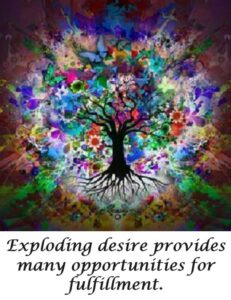
Let’s remember that the cycle of fulfilling a need is: need, desire, will, action, satisfaction of desire, fulfillment of need. We start with consciously or unconsciously experiencing a need. Out of the need comes desire, wanting something that will fulfill the need. Either consciously or unconsciously a strategy develops. A strategy is a series of actions undertaken with a purpose. Here our purpose is to satisfy a desire that will fulfill a need. Our will takes our purpose, our motivation, and moves us to act. We then experience the consequences of our action as satisfying or not satisfying our desire and therefore fulfilling or not fulfilling our need. At this point we should examine the results of our strategy repeating a strategy that is successful and changing it if it is unsuccessful in fulfilling the desire and need.
We have strategies for initiating something in our life and strategies for responding to something that comes our way. The initiating strategies for effective living guide us to take the actions that will fulfill our needs and desires. The responding strategies for effective living guide us to react to pain and suffering in a variety of ways that we will explore. (Additionally, responding strategies serve many purposes that we won’t address here.) Though a strategy may be responsive it also initiates, begins something new at the same time.
Where do strategies come from? Strategies are either spontaneous or deliberate. Spontaneous strategies are a series of actions taken with little awareness, thought, or choice. In childhood they arise automatically out of desire and innocence. (Innocence—experiencing something for the first time and acting or reacting spontaneously.) We built a collection of strategies from our experiences and by observing and learning from what others do, especially our parents. We can deliberately choose a successful strategy from our collection as needs arise and modify an unsuccessful strategy. Unfortunately we may repeat a failing strategy hoping that the outcome of our actions will somehow be different. Repeating an unsuccessful strategy is a recipe for failing and there are many reasons why we do this. One reason is that unrealistic hope pushes us into doing more of the same. We do not give up this hope because we want to avoid the pain of hopelessness-having less or no hope.
Point of Empowerment: Take responsibility for your strategies they belong to you. They serve you.
PROBLEMS AND ISSUES
Point of Empowerment: Problems and issues prevent us from developing effective strategies, cause us to develop faulty strategies, and prevent us from acting effectively as we put our strategies into action.
A problem is a repeating situation that does not go the way we want it to go. A problem is a repeating failure. To solve a problem we begin by identifying what we want (what our desire is) and then exploring the strategy we are using to get what we want. Answering the question, “How and why is my strategy failing?” will point you in the direction towards finding a new more successful strategy. For example, “My problem: I keep losing my keys forgetting where I put them. I am careless regarding my keys. My strategy to solve this problem: I will put my keys in the same place whenever I put them down and develop the self-discipline necessary to accomplish this. Hopefully this strategy will solve the problem of losing my keys.” We can usually solve any problem once we decide to find solutions.
An issue is a repeating problem caused by a faulty image. We can recognize the existence of issues by the chronic frustration and hopelessness that they cause. Our images are composed of beliefs, attitudes, memories, decisions, and expectations for the future. Images are often complex with many components. They are a normal aspect of the self that direct and guide our life. Many images contain components that cause difficulties for us but it is often the beliefs of our images that cause the most problems. Problematic images are caused by painful experiences in childhood, either single traumatic experiences or chronically painful experiences. We can learn about the origins of our images in childhood and see how they cause issues.
We can resolve our issues by understanding and changing our images. As we look at examples we can
the complexity of issues and the challenges in accomplishing resolutions. This is not easy as it can take years to face, understand, and resolve issues. It often takes professional assistance to accomplish this. These examples are designed to illustrate what operates within us.
Point of Empowerment: We can approach our issues with curiosity, self-compassion, persistence, and the knowledge that we can succeed in our quest for growth and healing.
- “My issue: I continue to rebel against all authority figures in my life because my father was unbearably strict and did not let me express myself. I believe that I have to fight with authority figures (who are all the same as my father) so that I can fulfill my desire to be heard and my need to be understood. Feeling understood will also help me feel loved. Fighting is my strategy, a strategy that does not seem to lead to fulfillment. The resolution to this issue is to see that all authority figures are not like my father and to learn to express myself in a constructive, assertive manner. This leads to my new strategy of effective and assertive communication. ”
- “My issue: Since my mother frequently neglected me and failed to provide what I needed I believe that I don’t deserve good things in life. Due to this belief I cannot find a good strategy to bring me the good things I want. I understand that the resolution to this issue is to identify when this belief is operating (guiding my behavior) and to change it to a belief that I deserve to get what I want. My new belief will give me the freedom to have desires and to develop effective strategies to fulfill them.”
- “My issue: As I grew up I put everyone else’s happiness before mine. I got a lot of approval for this approach fulfilling my need to be loved and to have self-esteem. As an adult I experience a painful emptiness at times because I don’t have an effective strategy to find happiness. The resolution to this issue is to recognize that a strategy that worked in childhood does not work as an adult and to recognize that a good strategy for happiness is to seek a balance between mine and other people’s happiness.”
Our problems and issues generate emotional pain and suffering. We can turn that emotional pain and suffering into physical pain and suffering if we don’t address the emotional difficulties we have. We know that stress affects us physically but we tend to ignore the emotional pain of stress and don’t see how this pain becomes physical pain.
Point of Empowerment: If you don’t solve your problems and resolve your issues you will have the pain and suffering of unsolved problems and unresolved issues. Chronic problems become chronic pain. Chronic pain becomes suffering. Life and our deep wise self demand that problems and issues be addressed. Life wants to move us to face these aspects of living. If you don’t the pain and suffering get worse until you cannot ignore a problem or issue any longer. Problems and issues then become crises.
BELIEFS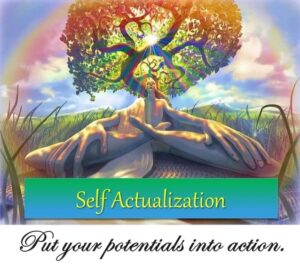
It is important to explore the role of our beliefs in developing effective strategies for living and for avoiding and responding to pain and suffering. Our beliefs influence our thoughts, feelings, and actions. We have beliefs about ourselves, the world, and about ourselves in the world. We have beliefs about cause and effect, about how we and our world work. We have core, intermediate, and operational beliefs—the beliefs that guide our usual daily behaviors. Our beliefs are one of the most important causes of and motivations for our actions. We experience life and act according to our beliefs. Let’s take a look at some examples of how our beliefs influence the development of our strategies for fulfilling our needs.
- Belief: I have needs and will live my life finding ways to fulfill these needs. I understand that I have successful and unsuccessful strategies that I own and take responsibility for. Strategy: I will decide what I want and examine the strategies I use to get what I want, creating modifications along the way if necessary.
- Belief: I am not sure that I have needs and am confused about how to fulfill them. But I am willing to explore and learn about them. Strategy: I will become more introspective and self-observant but since I don’t want to put too much pressure on myself I probably won’t do this very often.
- Belief: I believe that occasional success in getting what you want in life is the best that a person can expect. Strategy: I live life spontaneously and run on autopilot for better or for worse. I am not really interested in looking at life or at myself very closely. I am ok with some happiness, some of the time, hit or miss.
- Belief: Frustration is painful but won’t hurt me. Strategy: I am willing to feel frustrated and will examine the circumstance that led to my frustration, determine what my strategy to satisfy my desire was, and revise it hoping it will become more effective in getting me what I want.
- Belief: Frustration is unbearable. It is better not to want anything. Strategy: I will avoid having desire, numb myself against frustration, and get through each day as best as I can.
- Belief: I should feel guilty and ashamed for having needs and desires. This is what I was taught as a child. To avoid feeling guilt and shame I deny my needs and desires. I have no strategy to fulfill them. Resolution: Resolve this issue by identifying and changing the belief. A new belief could be that having needs and desires is part of being human, what makes us human and welcome them. Refuse, refuse, refuse the guilt and shame and practice being happy as you seek to fulfill your needs and desires.
- Belief: I believe that I don’t have any needs. I prefer ignorance about who I am to taking responsibility for myself and my life, even though I am anxious, depressed, and feel empty at times. Strategy: Use the defense mechanism of denial to maintain my stability. I know unconsciously that I will continue heading downhill until I hit rock bottom and the pain is unbearable. Then I will begin self-examination.
(To learn more about beliefs and changing beliefs go to the Letter index and scroll down to the section on beliefs. https://iifsd.org/library/newsletters/)
CONCLUSION
In this Letter we continued our exploration of effective strategies for living in preparation for applying these ideas to pain and suffering. In addition to alleviating pain and suffering, effective strategies can be a “game changer.” A game changer is something that empowers us to “change the way we play the game of life.” As a game changer effective strategies for living can be evolutionary, revolutionary, or just interesting.
A reminder, Chapter 7, Human Needs, from The Operating Manual for the Self is published on the website. https://iifsd.org/topics-for-empowerment/human-needs/
